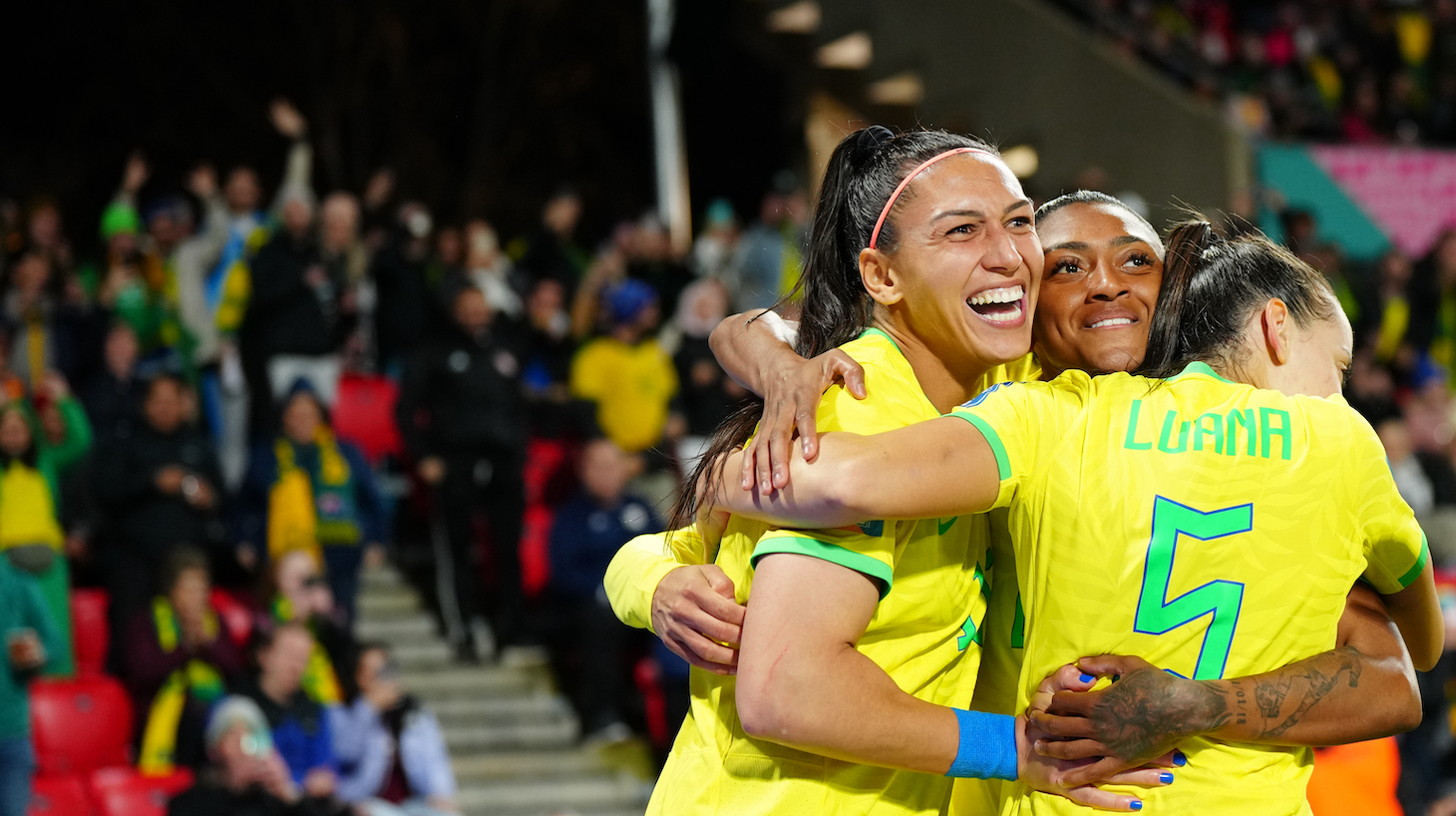I am a firm believer that soccer is a deeply cultural game. The idea is that a nation's soccer tradition is more than a jersey and a pregame anthem, that English players tend to play one way, Argentines another, Spaniards yet another, etc., and that the reasons for that all emerge from each individual region's unique cultural context, which informs what people think, how they move, the ways they express themselves, what they value, and everything else that makes them who they are. Exceptions abound, of course: there are nimble-footed Brits, plodding Brazilians, and everything everywhere in between. But there's something especially wonderful about the sport when a player or team can capture the essence of a place—of their place—and incarnate it on the field in all its inimitable beauty.
Maybe that's putting it too abstractly. The idea is pretty simple. For instance, take this goal, from Brazil's 4-0 victory over Panama on Monday, noting its style and also the commentary:
Jacqui Oatley put it perfectly on her call: "This is Brazilian football at it's best! And the finish from Bia Zaneratto to cap off the move of the tournament so far! You don't get any more Brazilian than that!" This is precisely what I mean.
Tamires (a left back wearing the no. 6, itself a uniquely Brazilian thing) plays the ball down the line to Debinha. Debinha's first touch is to rake her studs over the ball while running over it to drag it back to create some space between her and the defender. She then sends a pass into the box and immediately sprints over to change her angle. Reading the opportunity for a tabelinha, Luana Bertolucci completes the give-and-go with a gorgeous first-time backheel. Debinha then sizes up the defense as she runs onto the return ball, and sends an arcing pass over the Panama back line onto the run of Ana Borges. Borges kills the ball by practically stepping on it. Then she waits and waits and waits, resisting the urge to shoot, her cool-headed patience in contrast with the frantic Panamanians Rosi and goalkeeper Yenith Bailey, both of whom fall over themselves anticipating a shot that never comes. There on the precipice of the goalmouth, instead of going for what could've been her hat-trick, Borges passes, flicking the ball behind her to Zaneratto, who drives it into the net, and joy erupts on the faces of the Brazilian team.
So much of that is exactly what one means when they refer to Brazilian soccer. The technical precision, the creative thinking, the improvisation, the flair, the tabelinha, the backheels, the irreverence, the smiles on the players and on everyone watching—all of that stuff makes up what it is to play soccer the Brazilian way. The goal itself is a thing to delight in. That that Brazilian spirit still endures, even in an era dominated by a more regimented and academic paradigm of play, is a minor miracle. That that spirit finds such full manifestation in the Brazilian women's team, the largely forgotten offspring of a macho national culture that institutionally provides far too little support to the women and girls who wish to play the game, to express themselves and their Brazilianness, is something I find moving in ways I find hard to articulate. The closest I can come to summarizing the feeling I get watching that goal, and what I believe it means, is to paraphrase Oatley: This is soccer at its finest.






